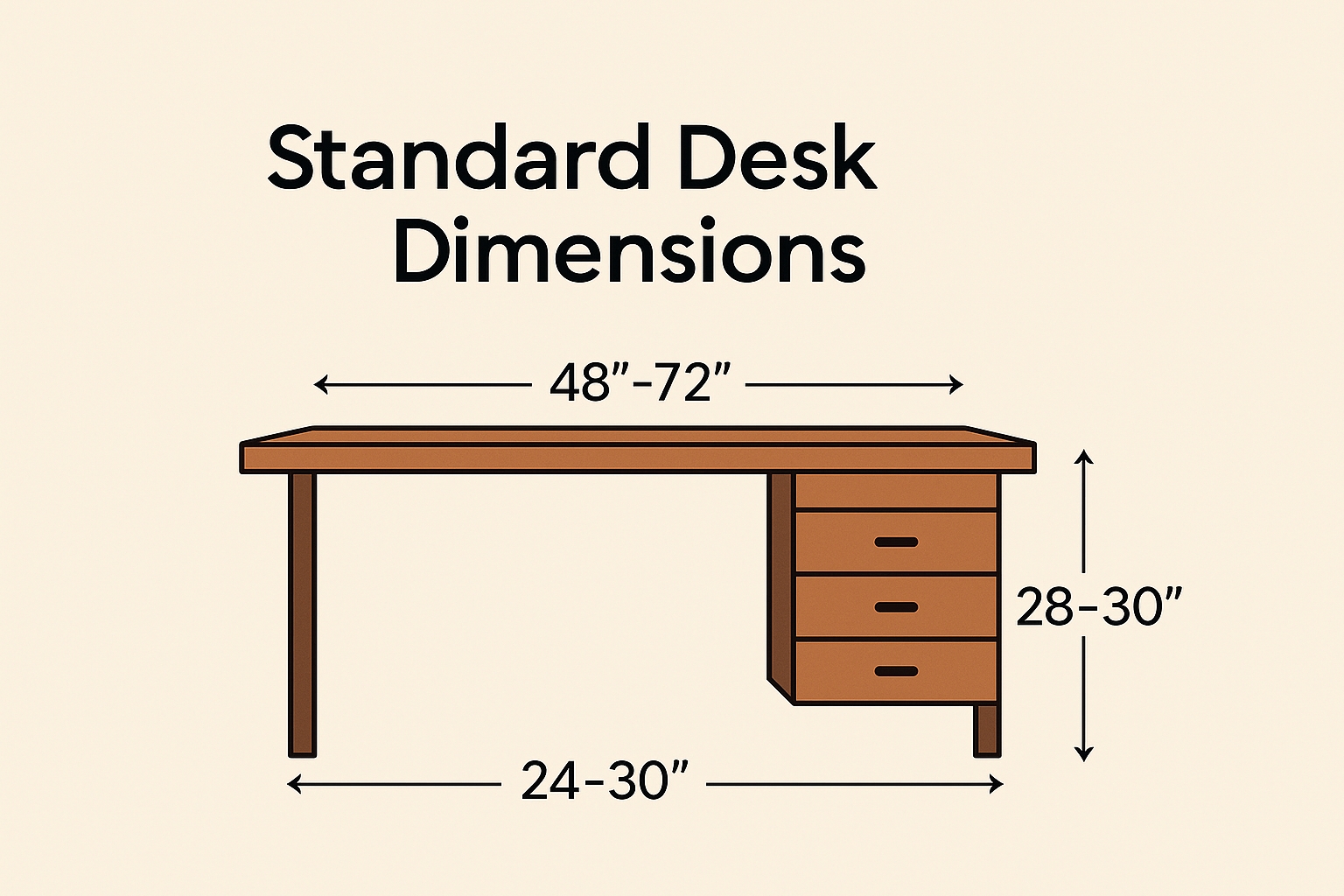
Here are the standard dimensions for common desk types, including sitting desks, standing desks, writing desks, and executive desks. Use this quick reference to find the right fit for your space.

| Desk Type | Typical Dimensions (L x W x H) | Key Features / Use Cases |
|---|---|---|
| Sitting Desk | 48″-72″ x 24″-30″ x 28″-30″ | General use, writing, computer work |
| Standing Desk | 48″-72″ x 24″-30″ x 38″-50″ | Adjustable height for standing/sitting work |
| Built-In Desk | Custom | Integrated into room design, customizable |
| Writing Desk | 30″-60″ x 18″-24″ x 28″-30″ | Minimalist, light writing and reading tasks |
| Computer/Gaming Desk | 48″-72″ x 24″-30″ x 28″-30″ | Designed for computers, dual monitors, gaming |
| Credenza Desk | 60″-72″ x 18″-24″ x 28″-30″ | Storage-focused, often a secondary workspace |
| Executive Desk | 60″-72″ x 30″-36″ x 28″-30″ | Large, professional, for executive office use |
| Secretary Desk | 30″-42″ x 18″-24″ x 40″-48″ | Compact, fold-down work surface with storage |
How to Choose the Right Desk Height
A standard desk height for seated work is 28″-30″.
- Your elbows should form a 90-degree angle when typing or writing.
- There should be ample clearance for your knees (minimum 24″ depth at knee level).
Standing desks should allow you to type comfortably with your arms at a 90-degree angle and monitors at eye level. Adjustable models (range: 28″-48″) are ideal for switching between sitting and standing.
Tips for Planning Desk Space
- Single workstations: Allow at least 31.5″ depth and 63″ width for a freestanding desk.
- Shared workspaces: Plan 16-32 sq ft per person. Use dividers or L-shaped desks to optimize space.
- Maintain 2-2.5 ft clearance behind the desk for easy movement.
The post Standard Desk Dimensions appeared first on Homedit.







